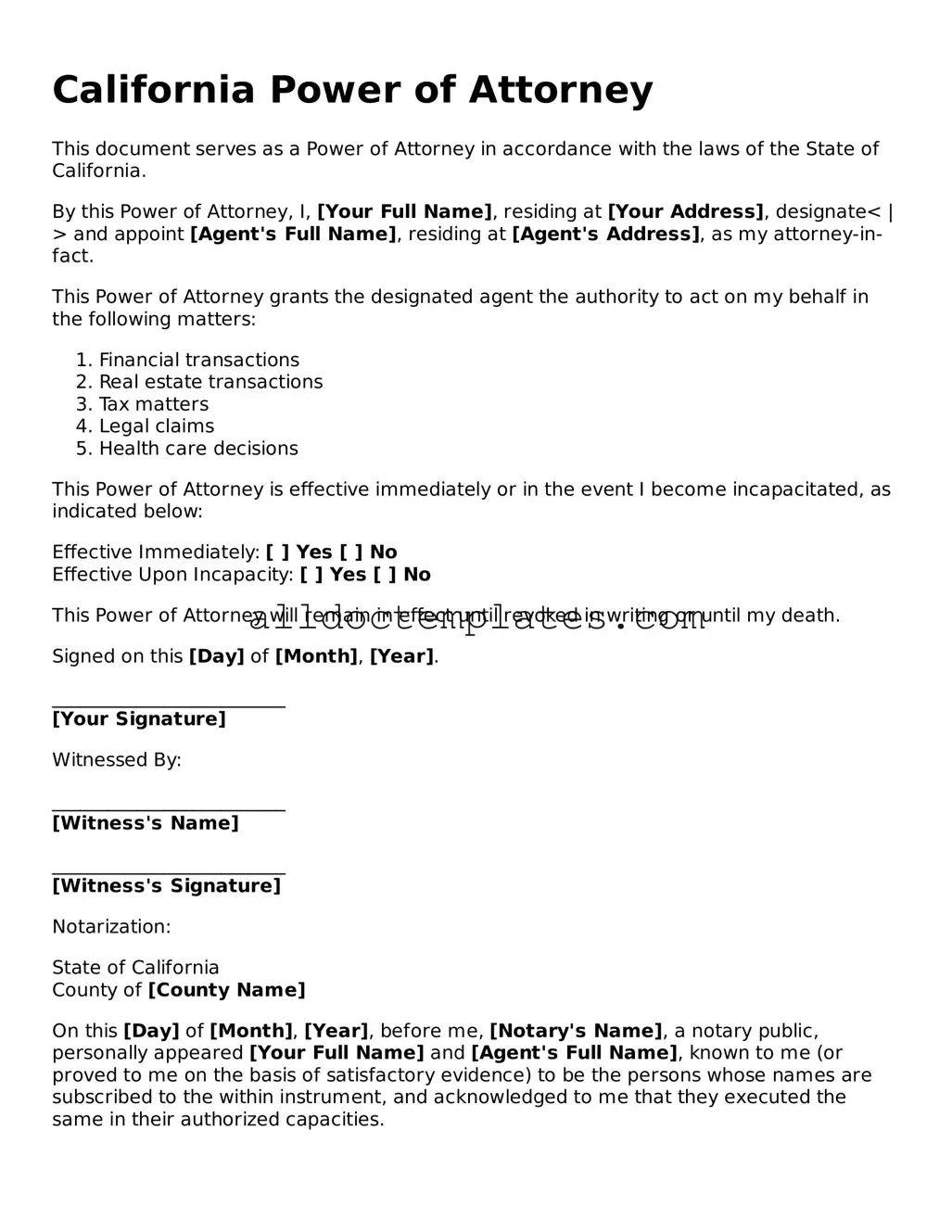California Power of Attorney
This document serves as a Power of Attorney in accordance with the laws of the State of California.
By this Power of Attorney, I, [Your Full Name], residing at [Your Address], designate< | > and appoint [Agent's Full Name], residing at [Agent's Address], as my attorney-in-fact.
This Power of Attorney grants the designated agent the authority to act on my behalf in the following matters:
- Financial transactions
- Real estate transactions
- Tax matters
- Legal claims
- Health care decisions
This Power of Attorney is effective immediately or in the event I become incapacitated, as indicated below:
Effective Immediately: [ ] Yes [ ] No
Effective Upon Incapacity: [ ] Yes [ ] No
This Power of Attorney will remain in effect until revoked in writing or until my death.
Signed on this [Day] of [Month], [Year].
_________________________
[Your Signature]
Witnessed By:
_________________________
[Witness's Name]
_________________________
[Witness's Signature]
Notarization:
State of California
County of [County Name]
On this [Day] of [Month], [Year], before me, [Notary's Name], a notary public, personally appeared [Your Full Name] and [Agent's Full Name], known to me (or proved to me on the basis of satisfactory evidence) to be the persons whose names are subscribed to the within instrument, and acknowledged to me that they executed the same in their authorized capacities.
_________________________
[Notary's Signature]
